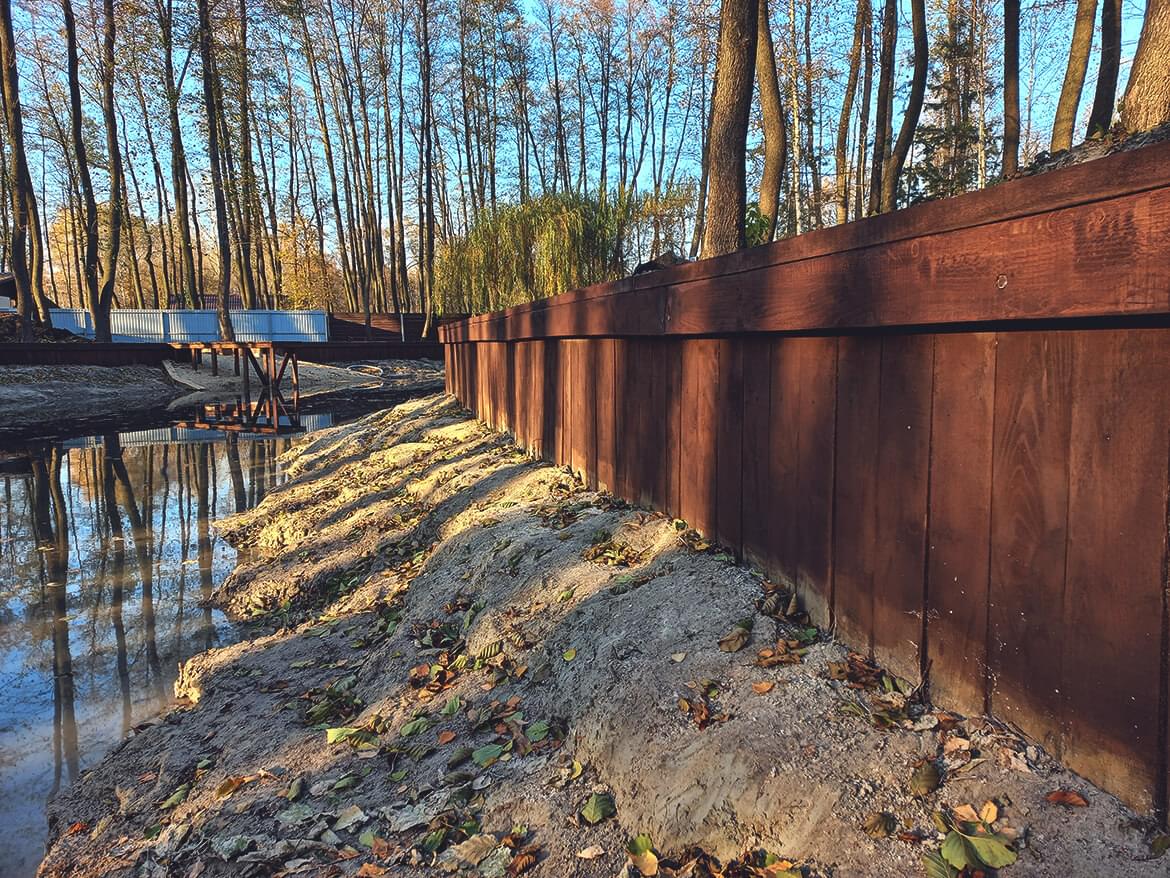Exploring the Different Uses Bulkhead Structures in Modern Design
Bulkhead frameworks play a significant role in modern design, offering both visual and practical functions. They can define spaces, enhance storage space services, and boost illumination. In industrial settings, they work as focal points that show brand name identity - Bulkhead on Lake Livingston. In addition, their combination often supports sound management and sustainable practices. Recognizing the full extent of their applications reveals much about contemporary design trends and individual experience. What cutting-edge usages of bulkheads might arise in the future?
Specifying Bulkhead Frameworks
Bulkhead frameworks play a crucial function in contemporary architecture, serving as important components in various structure layouts. These frameworks are normally defined as increased ceilings or platforms, commonly utilized to hide mechanical systems, wiring, or plumbing. Bulkheads can be located in both household and industrial setups, where they offer a smooth mix of functionality and aesthetics. Their style can integrate lighting fixtures and various other ornamental aspects, improving the overall aesthetic appeal of a room.
Normally created from products such as wood, drywall, or metal, bulkheads can be tailored to fit the architectural design and demands of the building (Bulkhead on Lake Livingston). They offer not just to hide undesirable facilities however additionally to produce specified zones within open rooms. By handling the circulation of a space, bulkheads add to the spatial company, making them a substantial aspect of modern architectural technique. As a result, their definition envelops both sensible and aesthetic measurements
Functional Applications in Residential Style
Bulkhead structures play an important duty in domestic style by helping with room optimization strategies that make best use of functional locations. They add visual style elements that improve the aesthetic allure of living spaces. On top of that, these structures provide crucial structural support options, ensuring the stability and safety and security of the home.
Area Optimization Techniques
As modern property layouts significantly prioritize efficient use of area, innovative methods emerge to maximize performance without compromising aesthetics. One prominent approach involves the combination of bulkhead structures, which can define areas while providing important storage space options. These frameworks can be employed to produce upright storage space devices that boost both company and accessibility. In addition, multi-functional furniture, such as convertible sofas and collapsible tables, enhances bulkhead designs, enabling areas to adjust to differing requirements. Open flooring strategies better enhance spatial flow, urging flexibility in operation. Including built-in shelving and recessed illumination within bulkheads additionally adds to a streamlined setting, ensuring that every inch of space is utilized successfully and harmoniously within the overall layout.
Aesthetic Layout Elements

Architectural Assistance Solutions
In modern residential style, an effective structural support service is necessary for keeping the stability of rooms while optimizing format and performance. Bulkhead frameworks play a significant function in this scenario, serving as both support and partitioning components. They can conceal mechanical systems, such as pipes and electrical circuitry, while giving support to the ceiling and flooring systems. By purposefully putting bulkheads, engineers can produce specified areas within open flooring strategies, boosting functionality without endangering structural stability. Additionally, these structures can accommodate lights components, adding to both appearances and functionality. To summarize, bulkhead frameworks are essential in domestic layout, supplying functional support options that boost both the functionality and visual charm of living spaces.
Enhancing Aesthetics in Industrial Areas
When commercial areas accept innovative bulkhead structures, they not just specify physical limits however likewise substantially boost the total aesthetics of the environment. These building aspects act as aesthetic prime focus, attracting focus and producing a sense of intrigue. By integrating varied products such as timber, glass, or metal, bulkheads can reflect a brand name's identification and objective, adding to a cohesive layout.
In addition, the calculated placement of bulkheads can manipulate light and darkness, including depth and dimension to otherwise level spaces. This interaction can transform a commercial location into an inviting ambience, motivating consumer interaction. Furthermore, using color and appearance in bulkhead design can stimulate particular emotions, enhancing the overall consumer experience. Eventually, the thoughtful assimilation of bulkhead structures boosts the visual allure of commercial rooms, making them not only practical however also visually charming, thereby promoting a lasting impact on visitors.
Acoustic Performance and Sound Administration
Efficient acoustic efficiency plays a vital function in modern-day architecture, especially within business spaces where sound administration is important. Bulkhead frameworks can significantly improve acoustic top qualities by soaking up noise, lowering echo, and mitigating sound transfer in between locations. These functions are especially beneficial in atmospheres such as cinemas, dining establishments, and workplaces, where clear interaction and an enjoyable auditory experience are vital.
The calculated positioning and layout of bulkheads can help create sound-buffer zones, efficiently isolating loud locations from quieter ones. Materials used in bulkhead construction, such as soft coatings and acoustic panels, add to their sound-dampening capacities. In addition, the incorporation of bulkheads enables the combination of sound-absorbing aspects without endangering visual charm. By resolving acoustic efficiency, engineers can produce harmonious settings that enhance comfort, improve customer experience, and promote productivity, making bulkheads an important part in the layout of modern industrial spaces.
Integrating Bulkheads for Effective Space Application
Typically neglected, the assimilation of bulkheads in architectural layout can considerably enhance area utilization in modern-day buildings. These architectural aspects offer several functional purposes, using a means to hide mechanical systems, electric circuitry, and pipes without jeopardizing appearances. By purposefully positioning bulkheads, designers can develop specified locations within open layout, thus assisting in far better organization and flow.
Furthermore, bulkheads can include storage space services and lights features, optimizing the functionality of or else wasted vertical area. In property setups, they may define areas such as kitchen areas or living areas, while in commercial areas, they can improve the performance of formats by plainly marking pathways and workspace.
Ultimately, the thoughtful combination of bulkheads adds to a more orderly and aesthetically enticing environment, allowing for adaptable spaces that can develop with the requirements of their passengers. This method not only optimizes area however likewise fosters an extra harmonious interaction in between type and function.
Bulkheads in Public Architecture

Architectural Visual Enhancements
While several building elements go for capability, bulkheads in public architecture serve a double function by enhancing visual allure. These structures typically create aesthetic passion with their style, incorporating flawlessly with bordering aspects. By official source using different products, structures, and colors, bulkheads can add to an unique identity for public areas, such as airport terminals, museums, and libraries. Their strategic placement find out this here aids to delineate locations, directing site visitors while adding deepness to the total style. Additionally, bulkheads can emphasize lighting, developing vibrant environments that alter throughout the day. This visual improvement not just elevates the visitor experience however additionally fosters a sense of area, making bulkheads a necessary factor to consider in contemporary public style. Generally, bulkheads embody the blend of form and feature.

Architectural Assistance Solutions
As designers seek cutting-edge means to boost the structural integrity of public areas, bulkheads become vital components in the layout and building and construction procedure. These frameworks provide critical assistance, especially in locations based on hefty foot traffic or dynamic tons. By dispersing weight uniformly, bulkheads help avoid architectural failure while permitting for flexible style options. In large venues, such as arenas and convention centers, bulkheads are commonly integrated into the overall architectural framework, making certain security and safety. Additionally, they can facilitate the incorporation of utilities and mechanical systems, adding to the efficiency of space use. Ultimately, bulkheads represent an important option in contemporary public design, reinforcing both performance and protection in community-focused atmospheres.
Environmental Security Actions
Integrating environmental management steps into public architecture has actually ended up being increasingly essential as urban developers prioritize sustainability along with structural support. Bulkhead structures serve a double function in this respect, serving as barriers against erosion and flooding while all at once boosting the aesthetic allure of urban landscapes. Their layout usually consists of natural environments such as vegetation, which can improve air top quality and supply habitats for wildlife. Furthermore, bulkheads can be crafted with absorptive materials that permit for water absorption, lowering runoff and advertising groundwater recharge. This integration of environmental factors to consider not only preserves the environment however likewise fosters neighborhood durability against climate modification. By utilizing bulkheads properly, designers contribute to lasting urban development that aligns with modern ecological objectives.
Future Patterns in Bulkhead Style
Arising patterns in bulkhead design reflect an expanding emphasis on sustainability, development, and functionality in modern style. Designers are increasingly integrating environmentally friendly products, such as recycled composites and bioplastics, to minimize ecological impact. Additionally, the integration of smart modern technology is becoming prevalent, allowing bulkheads to offer multi-functional objectives, including power storage and climate control.
In city settings, modular bulkhead systems are obtaining grip, offering flexibility in layout and ease of setup. These systems can be adjusted to various landscapes, permitting efficient area use. In addition, visual factors to consider are progressing; bulkheads are now being made to boost visual allure, frequently integrating creative aspects that resonate with neighborhood culture.
As climate durability becomes a priority, future bulkhead layouts will likely focus on flooding defense and stormwater administration, navigate to this website guaranteeing architectural stability while attending to environmental challenges. This shift indicates an alternative method to architecture that fulfills both ecological obligations and human demands.
Regularly Asked Concerns
What Materials Are Generally Utilized for Bulkhead Building?
Common materials for bulkhead building and construction include concrete, steel, lumber, and composite materials. These options provide sturdiness, structural honesty, and resistance to environmental factors, making them ideal for various applications in building and design projects.
How Do Bulkheads Influence Building Energy Efficiency?
Bulkheads boost constructing energy effectiveness by giving thermal insulation and minimizing air leakage (Bulkhead on Lake Livingston). They aid preserve interior temperature levels, therefore reducing home heating and cooling demands, eventually bring about lower energy expenses and boosted environmental sustainability
Exist Any Type Of Building Regulations Specific to Bulkhead Structures?
Yes, constructing codes particular to bulkhead structures exist, varying by place. These policies typically attend to security, structural honesty, and ease of access, making sure that bulkheads fulfill required criteria for construction and design within a provided jurisdiction.
Can Bulkheads Be Easily Changed or Removed Later?
Bulkheads can typically be customized or removed, depending on their layout and building. Such modifications may call for mindful preparation and adherence to structure codes to assure architectural stability and safety are kept throughout the process.
What Are the Costs Related To Setting Up Bulkhead Structures?
The expenses linked with mounting bulkhead frameworks can differ substantially, commonly influenced by products, layout intricacy, and labor. Generally, expenses range from modest to high, depending upon the project's particular requirements and area.
Bulkhead structures play a vital function in modern architecture, serving as necessary elements in different structure styles. Bulkhead frameworks play a vital function in property design by facilitating space optimization strategies that optimize usable areas. Often ignored, the integration of bulkheads in architectural design can considerably improve room utilization in contemporary buildings. As engineers seek innovative ways to boost the structural honesty of public areas, bulkheads emerge as vital elements in the design and construction process. The prices connected with setting up bulkhead frameworks can differ significantly, generally affected by products, style intricacy, and labor.